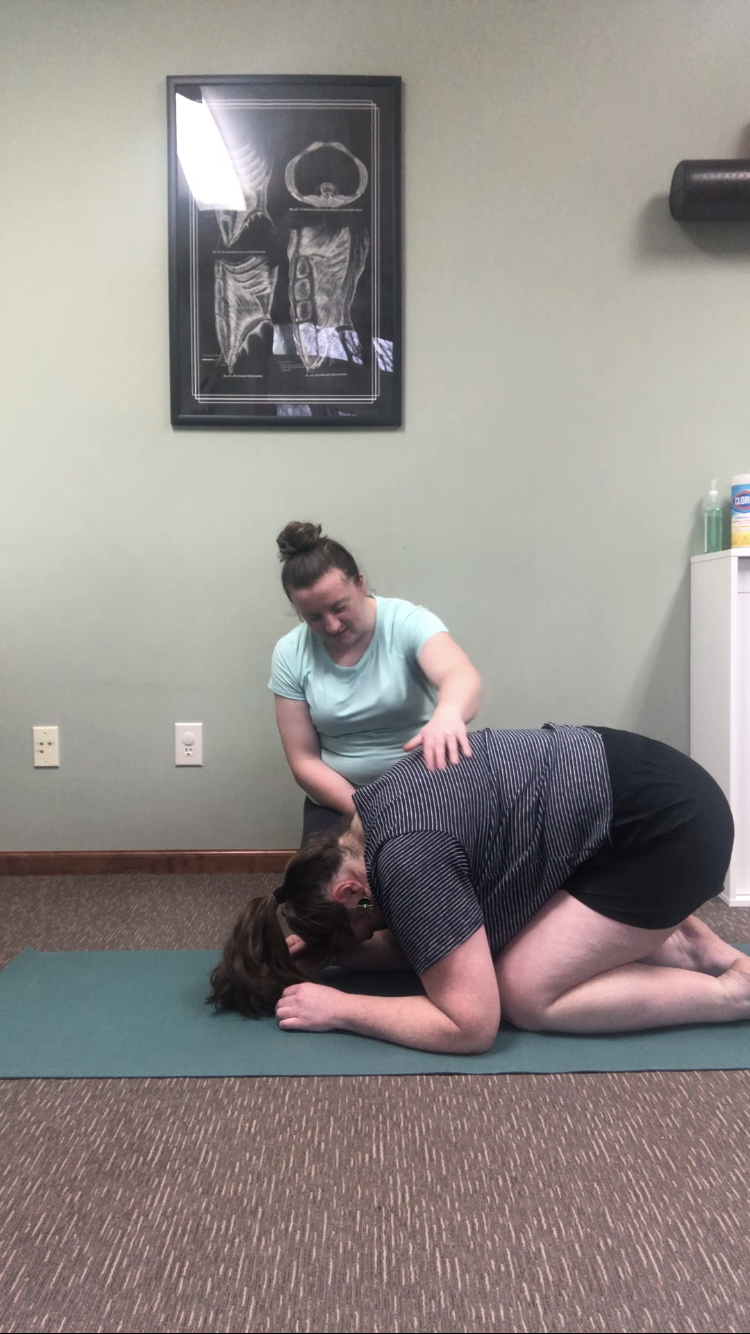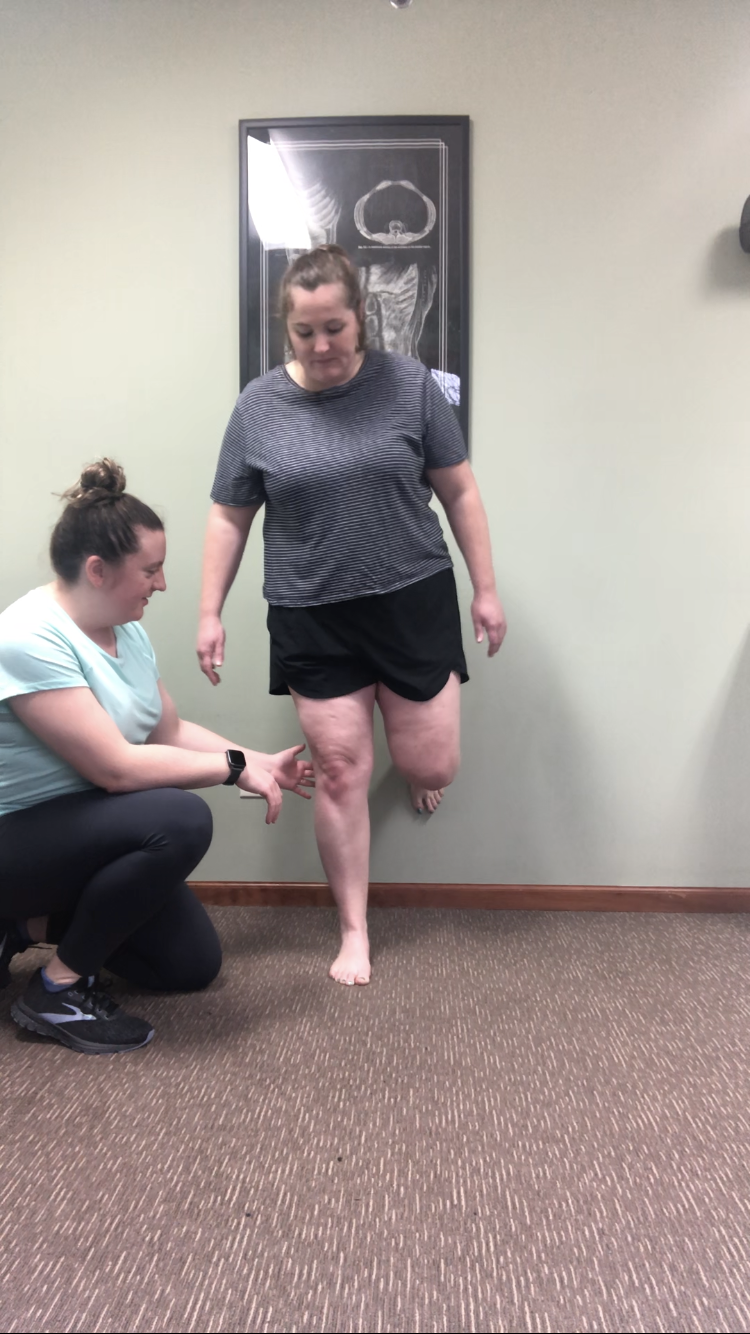Demystifying Pelvic Floor Therapy: Part 2
Possible exercise progression during pelvic floor therapy
Phew! You made it through the evaluation, now what?
After you’ve completed the initial evaluation and have a game plan laid out, it’s time for the follow up appointments. Typically we see clients once per week throughout their episode of care. Once you get rolling with exercises, we may space out to every other week to possibly even monthly but this is decided case by case.
What follow up appointments might look like:
An internal assessment might be completed. Why? This helps us find and directly treat tight pelvic floor muscles or give tactile feedback to your nervous system to help your body relearn that it doesn’t have to keep these muscles tight and tense. Internal assessments also help us assess if there is any scar tissue adhesions (if you had a tear during delivery, it’s possible you have scar tissue) as well as help us assess if the pelvic organs are sitting potentially lower than expected. Do you HAVE to have an internal assessment...NO! If you aren’t comfortable with the idea, you absolutely can decline this. Can we still help you address your issue...YES!
Manual therapy to address tight muscles/myofascial restrictions. For various reasons, we may discover tightness in muscles that needs to be addressed to help these muscles function more efficiently. If you have had any previous abdominal surgeries including a C-section we will assess the scars to ensure they are playing well with their neighbors. This is when dry needling might also be incorporated if both therapist and client agree.
Breathwork...it’s my favorite and the more I learn, the more I realize how crucial this element is! I’ll have a whole (possibly multiple) blog posts on breathing/breathwork but to keep it simple here, we can only get motion where air can go. If you have tightness (which who doesn’t?) we work on addressing these areas. When a person has more efficient breathing patterns and ability to get breath into specific areas throughout their rib cage/back they a) feel better and have less pain, b) their pelvic floor is happier and functions better, c) breathwork can help drive your parasympathetic (rest and digest) nervous system to help with calming effects. Do you have to do breathwork...technically no but will I still sneak it in with basically every exercise? You can bet your bottom dollar YES!
Posture retraining. When people hear (or read the word) posture almost always they will “correct” their posture. Now, when I say “posture retraining” its teaching people to have more awareness of their posture to help their core function more efficiently. Do I expect you to have “perfect posture” 100% of the time....well, I don’t have perfect posture myself 100% of the time so that wouldn’t be fair to expect from you. What I do want you to be aware of is how different postures might be impacting your symptoms and how to check in on your posture in certain activities for increased success.
Neuromuscular Re-education/Coordination will be incorporated throughout. No matter your issue, you have the issue because some muscle(s) is/are not working well regulated way. I like to describe it as a group project. Remember back in school and you were put into groups for a project, there were always the Type A’s that just ran with the assignment and completed it and the Type B’s that just went along for the ride, your body can do something similar. Typically there are overactive muscles that always want to be the center of attention and are constantly on and then there are the slackers that are getting by doing the bare minimum. We need to help find the balance.
Above are all possible exercises that may occur during your episode of care
Top row are various examples of positions working breathwork and rib cage/pelvis repositioning
Bottom row are various exercises working improved muscle coordination
A general care plan might look something like this:
Towards the beginning (sessions 1-3ish) working on breathwork, pressure management, posture
Towards the middle (3-6ish) continue honing in better coordinated patterns.... getting everyone to show up to the party and contributing their equal part.
Towards the end (6+) pushing your body through various exercises to ensure you can do whatever activity you want. You want to jump on the trampoline? Great! Test it out and report back once we are in this stage. Run after your kids at the park, same thing...go test it out.
In summary: pelvic floor therapy is NOT just internal work, you NEVER have to consent to an internal assessment if you are not comfortable with the idea. You will learn breathing mechanics, pressure management strategies, improved coordinated patterns and so much more!








